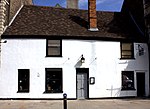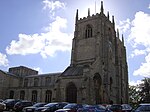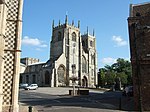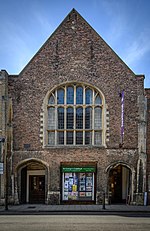Thoresby College

Thoresby College (also Trinity College) was a 16th-century collegiate-style residence for thirteen chantry priests in King's Lynn, Norfolk, East of England. Located on Queen Street opposite the Guildhall, it has been converted into a youth hostel, and offices for the King`s Lynn Preservation Trust. It is a Grade I listed building.The priests were employed by the Trinity Guild of King’s Lynn. Its founder and benefactor, Thomas Thoresby, was a merchant and three times Mayor of the town; he died in 1510 before the building was completed. Notable features include a Dutch gable front, the interior has exposed wood beams. The original great door was decorated with parchemin panels.
Excerpt from the Wikipedia article Thoresby College (License: CC BY-SA 3.0, Authors, Images).Thoresby College
College Lane, King's Lynn and West Norfolk South Lynn
Geographical coordinates (GPS) Address Nearby Places Show on map
Geographical coordinates (GPS)
| Latitude | Longitude |
|---|---|
| N 52.752 ° | E 0.394 ° |
Address
College Lane
College Lane
PE30 5DT King's Lynn and West Norfolk, South Lynn
England, United Kingdom
Open on Google Maps










